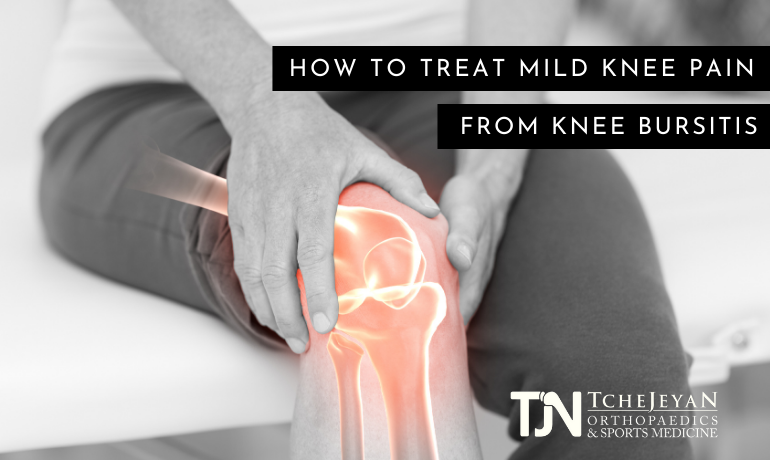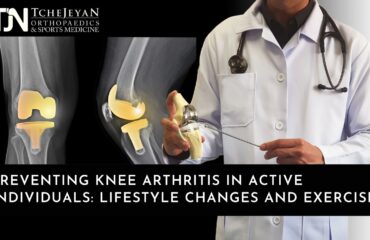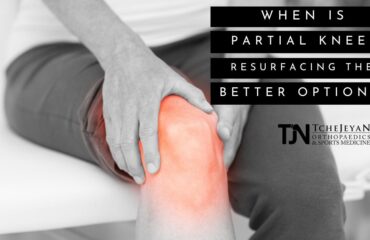Bursitis knee pain, even when relatively mild, can significantly affect your mobility and cause discomfort to the point that you can no longer participate in the activities you love or even engage in routine daily tasks. The good news is this condition can usually resolve itself with the proper care and a dedicated at-home treatment plan.
Bursitis is the inflammation of the bursae. Bursae are tiny, fluid-filled sacs that help reduce friction between tissues in your body at the joints. Bursitis commonly occurs in the shoulder, elbow, hip, and knee and often develops from joint overuse. For example, if someone begins a new job that requires lifting items out of boxes and placing them on shelves, that employee may soon find that their elbow or shoulder develops pain from this repetitive motion.
Bursitis can cause not only pain but stiffness. It can make the joint swell and redden, and the area can be painful to the touch. Unfortunately, the pain will not simply “go away” if you persist in continuing the activity that is causing the inflammation.
Consequently, if you notice that you are starting to experience knee pain and suspect that you have developed knee bursitis, it is essential to treat the condition as soon as possible before it worsens. With the proper treatment protocol, you can expect an improvement in your symptoms and healing within two to eight weeks. But without appropriate treatment, knee bursitis may result in chronic pain, long-term inflammation, and limited mobility.
Rest
Resting the inflamed joint is one of the most important aspects of a bursitis recovery treatment plan. With proper rest, you’ll give your knee the time it needs to heal and recover. But rest can be especially difficult for highly active individuals.
Still, it’s important: if you continue to white-knuckle your way through your workouts or everyday activities, you will never experience complete healing, making matters worse. Walking may or may not aggravate your bursitis, so you must listen to your body and avoid high-impact activities and any other activities that cause pain. And don’t return to your normal activities as soon as your knee feels better. If anything, go overboard in giving your knee the rest it needs to ensure you have fully recovered.
Ice
Ice is another critical aspect of a bursitis recovery plan because it decreases inflammation, one of the most significant factors contributing to pain and discomfort. Ice provides an external solution to reduce internal inflammation in the knee. Take the time to religiously ice the knee daily, preferably several times daily. Alternate about 10 minutes with an ice pack and 10 minutes without. Icing your knee during your rest times is ideal.
Compression
Wearing a compression sleeve is also helpful for those suffering from bursitis. Depending on your level of pain and swelling, you may benefit from wearing a compression brace for several hours a day or even 24 hours a day.
Elevation
Elevating an injured knee is another way to promote recovery. Elevating an injury helps by causing excess fluid to drain from the area. This reduces inflammation and pressure on the joint. Ideally, you want the elevated knee to be above the level of the heart, so put pillows under your knee while lying down.
The above steps are often given the acronym RICE, and it works for many types of injuries, including knee bursitis. If you find it challenging to adhere to the RICE regimen, use this forced down-time to undertake a project that you have needed to do, such as reading books you have been wanting to read, learning something new via an online course, organizing your digital photos and computer files, or cleaning up your phone messages and e-mails. You will feel better both mentally and physically when you are done.
Stretching and Strengthening Exercises
During recovery, there are low-impact stretches and strengthening exercises that you can undertake during your recovery that will help alleviate the pain caused by bursitis, strengthen the surrounding muscles, and promote a quick recovery. A physical therapist, chiropractor, personal trainer, or orthopedic care physician can provide instructions on specific exercises to help your knee.
If you think you are suffering from knee bursitis, Dr. Tchejeyan, the “LA Knee Guy,” can help. Schedule a visit where we can examine your knee and, if necessary, obtain some images to diagnose the source of your knee pain accurately. Contact us today at Tchejeyan Orthopaedics and Sports Medicine to learn more about our services and to schedule an appointment.




